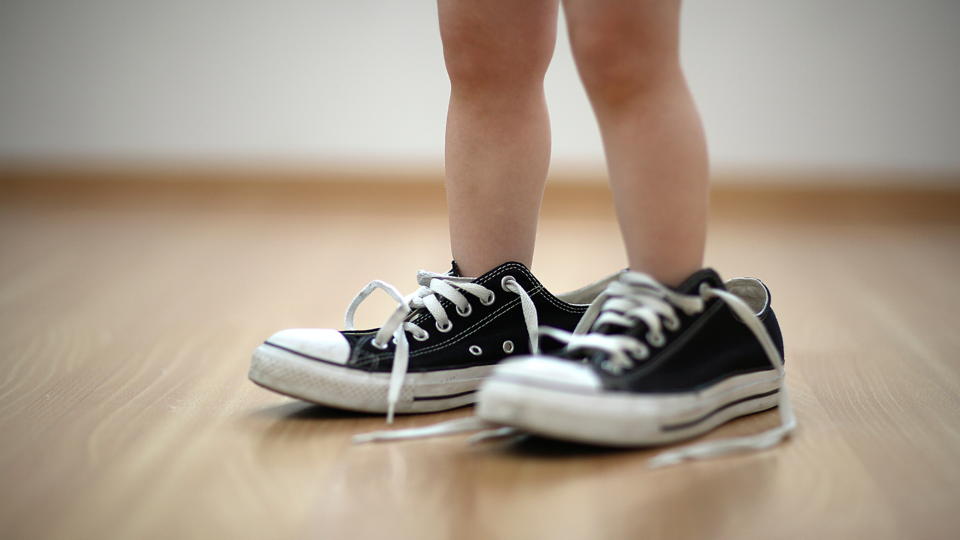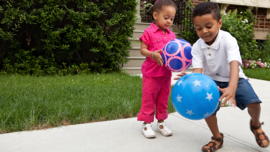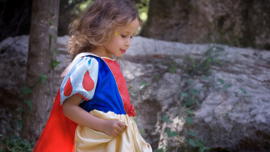Toddler milestone: Pretend play

When toddlers engage in pretend play, they show they are beginning to move from the literal to the symbolic—a big idea for little toddler! Discover why pretend play is so important.
Raising a toddler means getting to watch one of the most amazing developmental shifts of early childhood. Your child will go from using objects literally (rolling a ball, pounding with a hammer) to playing symbolically. Welcome to the wonderful world of pretend play, where a cardboard tube is a telescope and the space under the dining room table is a cave. I was fascinated as I watch this stage develop in my own children and it continues to fill me with wonder as I see the toddlers in my classes transform through play.
When I see a child begin to play imaginatively, I can tell that she has shifted away from seeing only one perspective (her own) and thinking of everything literally. It also tells me that she is making sense of the world around her and is gaining self-confidence.
Why exactly is pretend play such an important milestone?
- Pretend play helps young children work out their feelings in a safe way. Toddlers are trying to make sense of the coming and going of the adults in their world. One of the earliest pretend scenarios played out by toddlers is saying goodbye and then coming back. They do this by closing a door and pretending to go to work or driving off to the store in their pretend car. They reverse the rolls and “leave” the adults for a change. Toddlers may also work out feelings about an upcoming trip to the doctor, the arrival of a baby in the family or even a recent traumatic event. Since talking about emotions is beyond the reach of toddlers, playing is really the best way to work out these feelings.
- Pretend play involves lots of problem solving and more complex thinking. For example, if a toddler wishes to feed his baby doll, he must first put the doll in the high chair, gather some food, maybe find a spoon and position his body where he can feed the baby. Older toddlers or preschool aged children may enjoy making forts with pillows, chairs and blankets. They may have a vision of the perfect fort but building walls that don’t fall down takes some pretty tricky engineering and the use of trial and error.
- Pretend play provides more opportunities for language development. Whether your child is talking to herself, her stuffed bear or a playmate, she’ll find many opportunities to express herself through play.
- Pretend play lays the groundwork for cooperative play and the development of empathy. While toddlers generally play either by themselves or alongside same-age playmates (parallel play), they will soon start to play cooperatively. When they pretend and take on roles, they make room for playmates to join in. For example, if one child is the mommy, she’ll need playmates if she wants to have a family. Taking on roles also helps young children start to see the world from various perspectives. While children remain egocentric [perspective taking] for many more years, pretending helps them begin to step out of their singular point of view through play.












